Vanchatron
Banned
When we first started out in bodybuilding, I'm sure most (if not all) of us couldn't live without isolation exercises such as Barbell Curls, Side Lateral Raises, Tricep Extensions etc.
After training for 6 years with more than 50% of my routines composed of isolation exercises, I feel as if I've just been wasting my time. I'm now on Bill Starr's 5x5 advanced training routine which doesn't include ANY isolation exercises, and my strength/size seems to be increasing nicely.
I'm just wondering why people seem to rely so much on isolation exercises (like I used to). What is the TRUE need for them? There has to be a reason, otherwise everybody would just ditch them completely & work with heavy compounds in order to build size/strength. Even pro bodybuilders use isolation exercises.
Is it just to bring out more "detail" in the muscle (yes I said detail, NOT definition)?
I'm just sat here wondering whether I'll ever go back to incorporating isolation exercises in my routine again, if there's no real need for them. If there IS a need for them, then I'm curious as to why Bill Starr's Tried/Tested/Proven (whatever you wanna call it) 5x5 routine doesn't include any isolations.
Thanks.
After training for 6 years with more than 50% of my routines composed of isolation exercises, I feel as if I've just been wasting my time. I'm now on Bill Starr's 5x5 advanced training routine which doesn't include ANY isolation exercises, and my strength/size seems to be increasing nicely.
I'm just wondering why people seem to rely so much on isolation exercises (like I used to). What is the TRUE need for them? There has to be a reason, otherwise everybody would just ditch them completely & work with heavy compounds in order to build size/strength. Even pro bodybuilders use isolation exercises.
Is it just to bring out more "detail" in the muscle (yes I said detail, NOT definition)?
I'm just sat here wondering whether I'll ever go back to incorporating isolation exercises in my routine again, if there's no real need for them. If there IS a need for them, then I'm curious as to why Bill Starr's Tried/Tested/Proven (whatever you wanna call it) 5x5 routine doesn't include any isolations.
Thanks.


 Please Scroll Down to See Forums Below
Please Scroll Down to See Forums Below 










